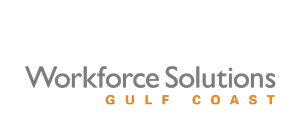In today’s workforce, mothers are a driving force — not just at home but across industries, teams, and leadership roles. Despite their talent and impact, a concerning trend is resurfacing: hundreds of thousands of working mothers are once again stepping away from their careers, often due to outdated policies and a lack of support.
According to the U.S. Department of Labor’s Women’s Bureau, over 40% of mothers with children under 18 are equal, primary, or sole earners in their households. Despite their essential role in both family life and the economy, many mothers continue to face workplace barriers. In fact, more than 400,000 women left the U.S. workforce in just the first half of 2025, according to a U.S. Labor Department report analyzed by The Washington Post.
Multitasking isn’t just a skill — It’s a superpower
Juggling the emotional, logistical, and financial demands of parenting make them excellent project managers, time strategists, and team players. But for moms with very young children, only 67% of women ages 25 to 44 with children under 5 were in the workforce in mid-2025 — the lowest rate in more than 3 years.
To better support working mothers, companies can offer flexible work hours that align with school and childcare schedules, implement hybrid or remote work policies where feasible, and design part-time roles to help mothers reintegrate if they’ve taken time away from the jobs.
These adjustments aren’t about making exceptions —they’re about building modern, sustainable work environments that make room for everyone.
Mothers are built to adapt
Motherhood is a continuous lesson in problem-solving, emotional regulation, and change management. From sleep regressions to sudden school closures, parenting trains women to adapt quickly and stay resilient under pressure —these strengths make mothers valuable assets in the workplace. Yet many leave companies that lack flexibility or growth opportunities.
36% of women with children under 13 were not working for pay in 2024 — nearly double the rate of men in similar households, because of Childcare constraints, as reported by the Federal Reserve System.
These aren’t women lacking ambition: they’re navigating systems that weren’t designed with families in mind.
Leading the next generation
Mothers often act as informal leaders in their families and communities, roles that demand communication, coordination, empathy, and decision-making. These same qualities translate directly into professional leadership. Despite being well-equipped to lead, mothers are often overlooked or undervalued in leadership pipelines.
A 2023 Lean In & McKinsey study found that:
- 48% of women leaders left their jobs in the past two years in search of better opportunities to advance.
- 37% said a coworker took credit for their idea — a sign of their contributions being dismissed or ignored.
Mothers in the workforce aren’t a niche issue — they are central to the health of the U.S. economy, the stability of families, and the long-term strength of organizations. Investing in working moms isn’t just the right thing to do — it’s a smart, strategic decision.




